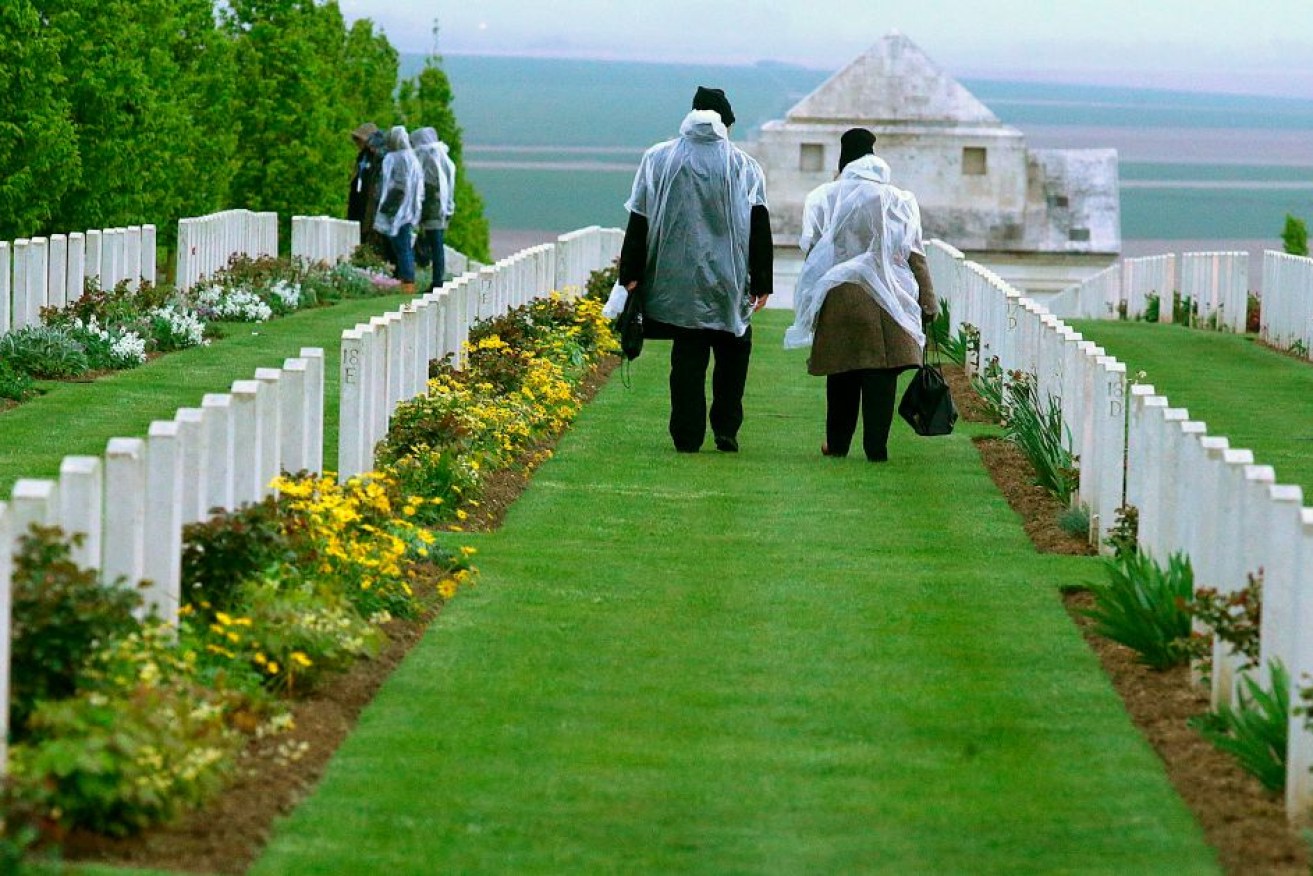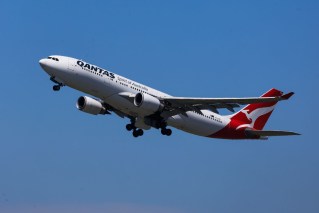An expert’s guide to five great battle sites


Visitors at the Australia-New Zealand military cemetery in Villers-Bretonneux, northern France. Photo: Getty
The sun is low, and the souvenir sellers are packing up as we arrive at Gallipoli. Our Turkish guide tells us it will be better to visit late, and he’s right.
We have the place to ourselves to wander the dusty hills, step onto the narrow beach, peer into the trenches where men lived, died and were buried. The terrain alone is heartbreaking: steep, rugged and rock hard.
To think of young Australians in this land, exposed, hungry, thirsty and afraid, so far from home, is incredible – 8709 of them died here, but Gallipoli’s toll totalled 126,669 from other nations too. As we leave, an old workman discovers we are Australian, and makes us a gift of a bullet he’s discovered.
Ten years on, visiting Gallipoli remains one of our family’s most poignant and powerful travel memories. Making a pilgrimage to a place where people have fought and died to protect their country’s principles and freedom is an extraordinary experience. More so for those whose families have played a part in Australia’s history at war. Many companies now specialise in military history touring.
As Australia marks the centenary of the Armistice that ended World War 1 (November 11, 2018) author and battlefield history authority Mat McLachlan says more of us want to visit the sites where Australians went to war. He nominates some of the most significant.
-
The Western Front, France and Belgium
At 8pm every night, the Last Post is played at the Menin Gate memorial in Ypres, Belgium. “Thousands turn up every night”, says Mr McLachlan.

A wall inscribed with the names of the fallen as people gather for the Last Post ceremony at the Menin Gate in Ypres, Belgium. Photo: Getty
They come to honour the missing whose names are recorded on the monument, 6000 Australians among them. Little more than an hour north of Paris, World War 1 Western Front battle sites including the Somme, Fromelles and Ypres are not only important historically but appealing, vibrant towns and cities, including Amiens, French President Emmanuel Macron’s home town.
-
Vietnam
The families of veterans are starting to make the pilgrimage to Vietnam, even though, often, the veterans themselves never wanted to return.
“They feel they owe it to the veterans to learn more about what they went through, especially because of the way the veterans were treated when they got home,” says Mr McLachlan, whose company runs battlefield history tours.
Vietnam’s war legacy is spread across the country, with much of it near Ho Chi Minh City in the south, where the famous Cu Chi tunnels can be visited. Vietnam’s appeal is enhanced by its welcoming people, beautiful hotels, resorts, colonial architecture and distinctive food.
-
Gallipoli, Turkey
The Australian government may warn Australians to stay away or tread with care, but thousands make the pilgrimage every year, now joined by the Turkish people for whom Gallipoli has renewed significance.
“I urge people who want to go to do so sooner rather than later,” says Mr McLachlan, saying pressure to increase the infrastructure for the two million annual Turkish visitors may change the site forever.

Anzac Cove on the Gallipoli Peninsula. Photo: Getty
This beautiful, if sometimes troubled country is suffering under travel warnings: Mr McLachlan notes that a lack of tourists has caused several major hotel closures in the region.
-
Kokoda, Papua New Guinea
Whether you call it a trail or a track, walking 96 kilometres in the footsteps of those who crossed the spectacular Owen Stanley Range during World War 2 is not something you can do on your own. But, says Mr McLachlan: “The idea you have to be an ironman to do it is a little bit overdone.”

The northern entrance to the Kokoda Trail, in PNG. Photo: Getty
Apart from the history, he says, walkers will take in “spectacular scenery, log bridges, and mountain peaks”. Most people travel with a group, guides, support personnel and a personal porter. “I’ve heard it’s the most difficult sea level track in the world,” Mr McLachlan says. And of course, it’s possible to visit Kokoda without taking a hike.
-
Australia
One of the most incredible episodes of World War 2 occurred on Australian soil, says Mr McLachlan, when 231 Japanese were killed trying to break out of Cowra prison camp to restore their honour.
He cites the burial ground – where all Japanese who died in Australia during WW2, including airmen shot down, are interred – as a powerful part of our history.
Five Australians died during the episode too. Mr McLachlan also praises the Temora Aviation Museum, in the NSW Riverina, and the Australian War Memorial in Canberra as must-visit destinations for military history buffs.
November 11, 2018 marks the centenary of the Armistice that ended World War 1 – four years that took 62,000 Australian lives. The Australian War Memorial in Canberra will display, until November 11, 62,000 handcrafted poppies to mark the centenary, and has a program of special events.








